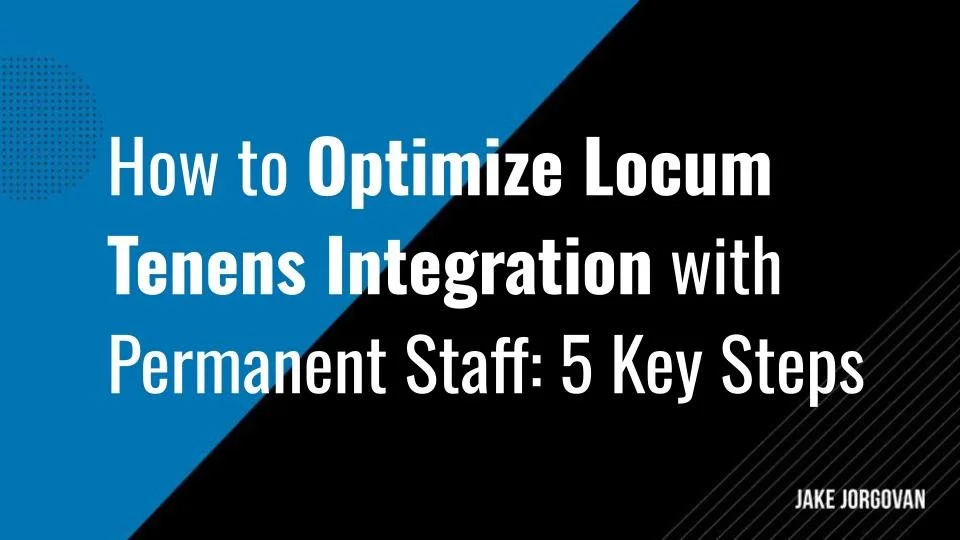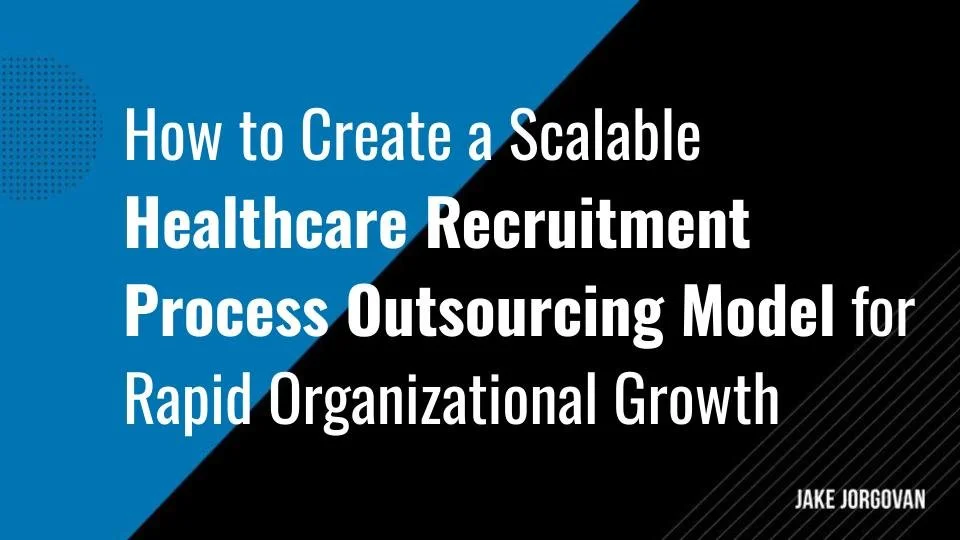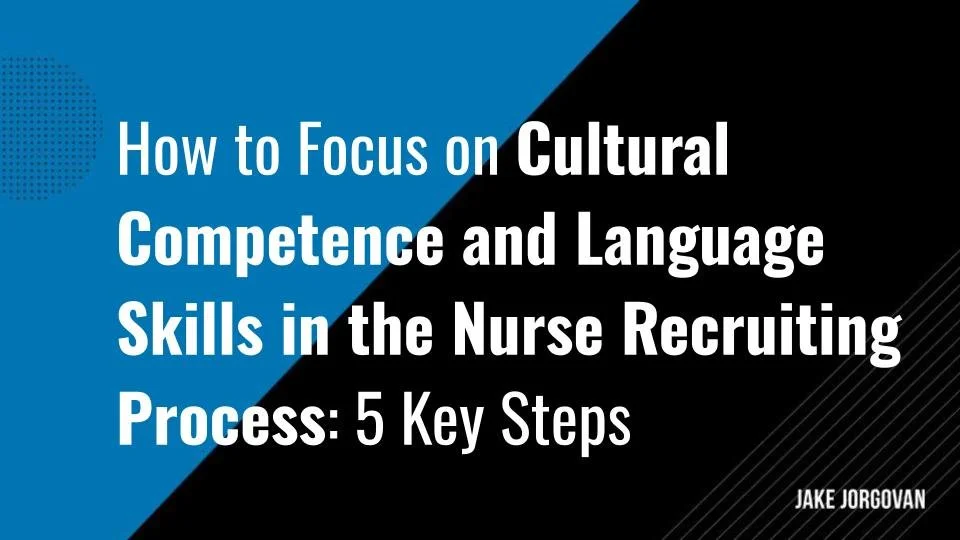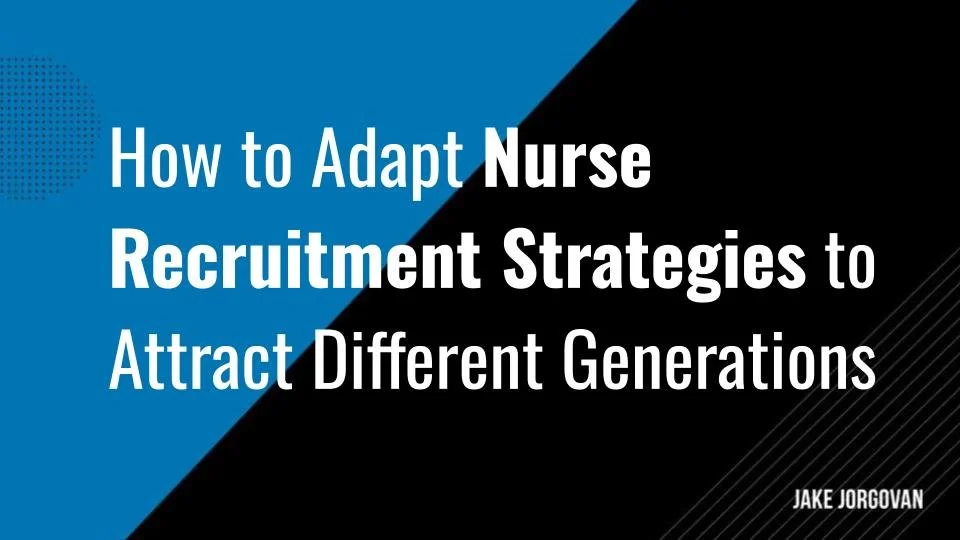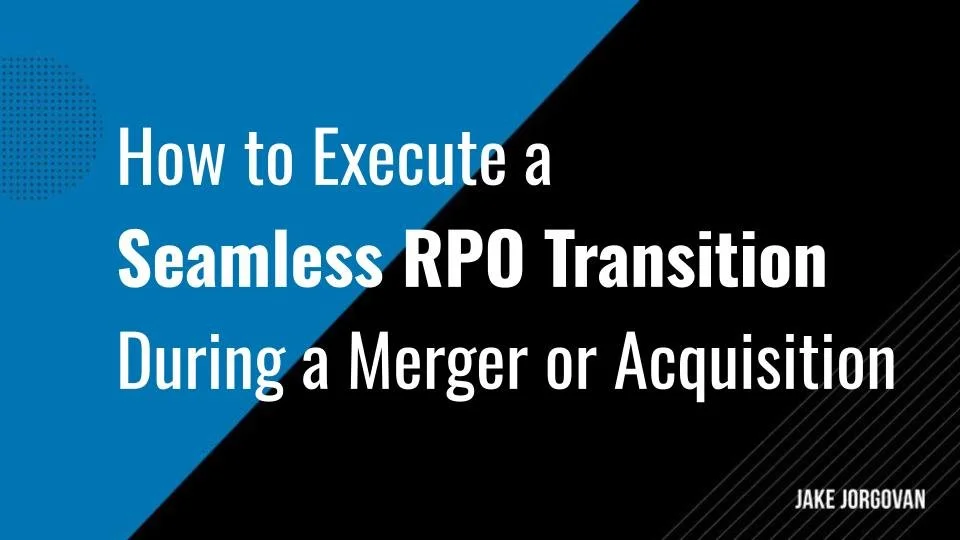How to Create a Scalable Healthcare Recruitment Process Outsourcing (RPO) Model for Rapid Organizational Growth
Hiring the right talent quickly is critical to scaling healthcare organizations.
Traditional recruitment methods often fail to meet the speed and complexity of this demand.
Healthcare Recruitment Process Outsourcing (RPO) offers a scalable solution and enables rapid growth while ensuring quality hires.
This article will outline how to build an effective and scalable healthcare RPO model that adapts to your organization's unique needs.
You'll learn key strategies for creating a flexible, efficient, and growth-focused recruitment process that meets industry demands.
5 Strategies for Building a Scalable Healthcare RPO Model
1) Implement Flexible RPO Contracts That Adapt to Fluctuating Hiring Needs
Adapting to rapid growth in healthcare requires a recruitment strategy that can handle shifting demands without compromising quality. It’s essential to scale your hiring efforts when demand surges, but you need flexibility built into your process to avoid overcommitment. Here’s how you can establish a recruitment model that’s responsive and adaptable:
Create modular contracts: Design contracts that allow you to adjust hiring volume based on current workforce needs easily. This prevents locking into long-term agreements that may not serve fluctuating hiring demands.
Build in variable cost structures: Incorporate cost flexibility to ensure you only pay for the services you actively use. Scaling recruitment becomes financially sustainable during hiring spikes or slow periods.
Set defined performance triggers: Define specific workforce demand thresholds to adjust the RPO provider’s involvement. This maintains operational efficiency without overwhelming internal teams.
Prioritize scalability with clear SLAs: Establish service-level agreements (SLAs) that prioritize speed and scalability while maintaining quality. Ensure these agreements leave room for quick adjustments during high-volume hiring phases.
Plan for real-time collaboration: Implement real-time feedback mechanisms so adjustments to hiring contracts can happen as conditions change. This improves the response time of your recruitment process to meet organizational shifts.
Insider Tip: We recommend incorporating a quarterly review process into your RPO contracts. This allows you to assess your hiring needs against the provider's actual performance and make necessary adjustments.
2) Leverage Data-Driven Recruitment Analytics to Anticipate Workforce Demand
In healthcare recruitment, anticipating workforce demands requires precision. Without the right insights, you’ll either under-hire or overextend resources. Data-driven analytics allow you to forecast confidently and align your hiring strategy with real-world needs. Here’s how to get started:
Implement predictive models: Use historical hiring data, turnover rates, and industry trends to predict future staffing needs. This helps you proactively build talent pipelines rather than react to shortages.
Monitor real-time metrics: Track real-time performance metrics like time-to-hire, candidate engagement, and onboarding completion. These insights provide immediate feedback on your recruitment process, identifying bottlenecks before they become problematic.
Utilize workforce planning tools: Integrate tools that allow for scenario planning, factoring in variables such as seasonal demand, regulatory changes, or market shifts. This improves your ability to adjust hiring strategies based on projected fluctuations.
Align analytics with RPO provider goals: Share data with your RPO provider to ensure they align with your workforce planning targets. Regular data sharing increases their capacity to deliver candidates that meet your anticipated needs.
Refine decision-making with AI tools: Leverage AI-driven analytics to analyze candidate fit, quality of hire, and long-term retention prospects. This will refine your decision-making process, reducing time spent on unsuitable candidates.
Insider Tip: We suggest setting up a monthly report that tracks hiring metrics and healthcare industry indicators like patient admissions or legislative updates. This enables you to anticipate hiring surges ahead of time and strategically allocate resources.
3) Build a Network of Pre-Vetted Healthcare Professionals for Immediate Placement
In the healthcare industry, the demand for qualified professionals can surge unexpectedly. When vacancies arise, waiting for a lengthy recruitment process risks patient care. Building a network of pre-vetted candidates ensures you can fill critical positions quickly and confidently. Here’s how to do it:
Develop a robust candidate database: Regularly update and maintain a pool of vetted healthcare professionals, including nurses, specialists, and administrative staff. Keep detailed records of qualifications, certifications, and availability.
Pre-screen candidates based on compliance: Conduct thorough background checks, license verifications, and compliance reviews before adding anyone to your database. This reduces the time spent validating candidates during urgent hiring needs.
Segment talent pools by specialization: Organize your candidate network based on their healthcare expertise and experience levels. This allows you to quickly match candidates to open positions that require specific qualifications or specialties.
Utilize automated candidate tracking: Implement a tracking system that alerts you when key candidates are available or ready for placement. This ensures timely communication with potential hires before competitors scoop them up.
Create ongoing engagement strategies: Keep in regular contact with your talent pool to maintain interest and ensure they remain open to new opportunities. This reduces the risk of losing high-quality candidates when a position becomes available.
Insider Tip: We recommend setting up an emergency deployment list for top-tier candidates who are available for immediate placement. This list should include key contacts and profiles, enabling your hiring team to act within hours, not days, during critical staffing shortages.
4) Integrate Technology Platforms for Efficient, Automated Candidate Screening and Onboarding
In healthcare recruitment, speed and accuracy are critical. Manual screening processes slow you down and introduce room for error, which can lead to hiring delays. Implementing the right technology ensures your candidate evaluation and onboarding are fast and efficient without sacrificing quality. Follow the steps below to implement this strategy:
Adopt AI-powered screening tools: Use AI algorithms to scan resumes quickly and match candidates to job requirements. This reduces the time spent manually reviewing applications and ensures higher accuracy in the initial screening.
Integrate digital assessment platforms: Implement platforms that allow candidates to complete skill assessments, personality tests, and compliance checks online. This provides real-time insights into each candidate’s fit for the role before they reach the interview stage.
Automate the onboarding process: Use onboarding software to streamline paperwork, compliance training, and orientation scheduling. This ensures new hires are fully onboarded faster, reducing the time between offer acceptance and the start date.
Leverage centralized databases: Store all candidate data in a single, accessible platform. This allows your recruitment team and the RPO provider to collaborate more effectively, reducing miscommunication and redundant processes.
Ensure compliance with digital tracking: Use technology to track all necessary certifications, licenses, and regulatory requirements for healthcare professionals. Automated alerts prevent lapses in compliance and maintain operational standards.
Insider Tip: We suggest customizing your screening tools to prioritize essential healthcare certifications and regulatory criteria. This ensures you don’t waste time on candidates who don’t meet baseline requirements and frees you to focus on high-quality prospects who are truly qualified for the position.
5) Develop Strong Communication Channels Between Internal Teams and the RPO Provider
Collaboration between your internal teams and your RPO provider is essential for efficient recruitment. Without clear communication, delays and misalignments occur, which directly impact your ability to fill critical roles. Setting up structured, consistent channels keeps everyone aligned and responsive to your organization’s needs. Here’s how to use this strategy:
Establish regular feedback loops: Schedule recurring meetings to review recruitment progress, address challenges, and adjust priorities. These touchpoints provide a continuous flow of information and prevent miscommunication between teams.
Designate point-of-contact roles: Assign specific team members as liaisons between your organization and the RPO provider. This ensures that both sides know exactly who to contact when issues arise, improving accountability and response times.
Use shared project management tools: Implement shared platforms where both internal teams and the RPO provider can track job requisitions, candidate progress, and key metrics. This creates visibility and reduces the chances of critical information slipping through the cracks.
Define response time expectations: Set clear expectations for response times to emails, reports, and candidate feedback. This keeps processes moving smoothly and reduces bottlenecks when decisions need to be made quickly.
Align on strategic objectives: Ensure both teams are aligned on your organization’s long-term workforce goals. This includes sharing insights into future growth plans, hiring targets, and any upcoming operational changes that might influence recruitment priorities.
Insider Tip: We advise creating a shared scorecard that tracks key performance indicators for both internal teams and your RPO provider. This creates transparency and enables both sides to proactively address performance issues and adjust strategies before they escalate into problems.
Set Your Organization Up for Rapid Growth
A scalable healthcare RPO model isn’t just about growth—it’s about sustainability.
You can drive long-term success while managing rapid expansion by aligning recruitment with organizational goals.
But the real question is: are you ready to rethink your hiring strategy to meet the future demands of healthcare?
Implementing an adaptable, efficient RPO model could be the key to staying ahead.










